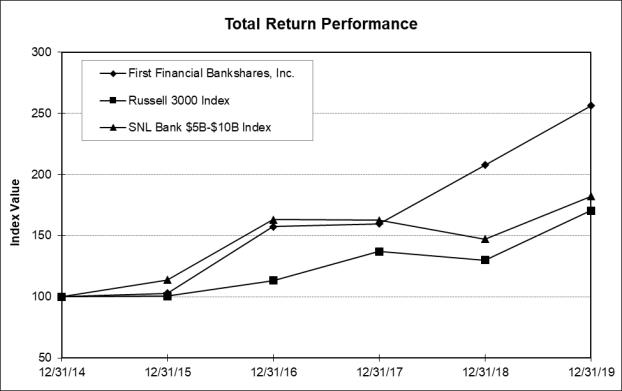The options outstanding at December 31, 2019 had exercise prices ranging between $7.87 and $29.70. Stock options have been adjusted retroactively for the effects of stock dividends and splits.
The following table summarizes information concerning outstanding and vested stock options as of December 31, 2019:
| |
|
|
|
|
|
|
|
|
|
|
|
|
|
|
| |
|
|
|
|
|
Remaining
Contracted
Life (Years) |
|
|
|
|
$ |
|
|
|
|
|
|
|
|
|
|
|
|
|
|
$ |
|
|
|
|
|
|
|
|
|
|
|
|
|
|
$ |
|
|
|
|
|
|
|
|
|
|
|
|
|
|
$ |
|
|
|
|
|
|
|
|
|
|
|
|
|
|
$ |
|
|
|
|
|
|
|
|
|
|
|
|
|
|
The fair value of the options granted during 2019 and 2017 were estimated using the
Black-Scholes options pricing model
with the following weighted-average assumptions: risk-free interest rate of
1.83%,
1.89%, respectively; expected dividend yield of
1.62% and
1.79%, respectively; expected life of
6.64 years and
6.24 years, respectively; and expected volatility of
26.6926.51%, respectively.
The weighted-average grant-date fair value of options granted during 2019 and 2017 was $7.31 and $4.95, respectively. There were no grants during 2018. The total intrinsic value of options exercised during the years ended December 31, 2019, 2018 and 2017, was $5,742,000, $5,476,000 and $3,082,000, respectively.
As of December 31, 2019, there was $4,943,000 of total unrecognized compensation cost related to nonvested share-based compensation arrangements granted under the Plan. That cost is expected to be recognized over a weighted-average period of 2.28 years. The total fair value of shares vested during the years ended December 31, 2019, 2018 and 2017 was $1,693,000, $888,000 and $1,246,000.
The aggregate intrinsic value of vested stock options at December 31, 2019 totaled $14,234,000.
On April 28, 2015, shareholders of the Company approved a restricted stock plan for selected employees, officers,
non-employee
directors and consultants. At December 31, 2019, the Company had allocated
686,000 shares of stock for issuance under the plan.
On April 26, 2016, upon
re-election
of existing directors,
7,660 shares with a total value of $
250,000 were granted to the
non-employee
directors and was expensed over the period from grant day to April 25, 2017, the next scheduled annual shareholders’ meeting at which the directors’ current term expired. On April 25, 2017, upon
re-election
of existing directors,
14,650 restricted shares with a total value of $
600,000 were granted to the
ten
non-employee
directors and was expensed over the period from grant day to April 24, 2018, the Company’s next shareholders’ meeting at which the directors’ term expires. On April 24, 2018, upon
re-election
of
nine
of the existing directors,
10,710 restricted shares with a total value of $
540,000 were granted to the
nine
non-employee
directors and is being expensed over the period from grant day to April 23, 2019, the Company’s next shareholders’ meeting at which the directors’ term expires. The Company recorded director expense related to these restricted stock grants of $
620,000, $
560,000 and $
483,000 for the year ended December 31, 2019, 2018, and 2017, respectively. On April 23, 2019, upon election of eleven directors,
21,714 restricted shares with a total value of $
660,000 were granted to the eleven
non-employee
directors, and is being expensed over the period from grant day to April 28, 2020, the Company’s next shareholders’ meeting at which directors’ term expires.
On October 27, 2015, the Company granted
31,273 shares with a total value of $
1,060,000 to certain officers that is being expensed over the vesting period of
three years. On October 25, 2016, the Company granted
15,405 shares with a total value of $
560,000 to certain officers that is being expensed over the vesting period of
three years. On October 24, 2017, the Company granted
14,191 restricted shares with a total value of $
655,000 to certain officers that is being expensed over the vesting period of
one to
three years.
On October 23, 2018, the Company granted
26,021 restricted shares with a total value of $
1,440,000 to certain officers that will be expensed over a
three-year vesting period. On June 26, 2019, the Company granted
23,428 restricted shares with a total value of
$
695,000 to
certain officers that will be expensed over a three-year vesting period. On October 22, 2019, the Company granted
